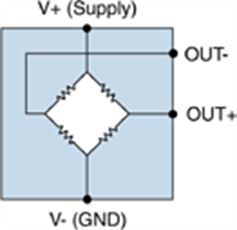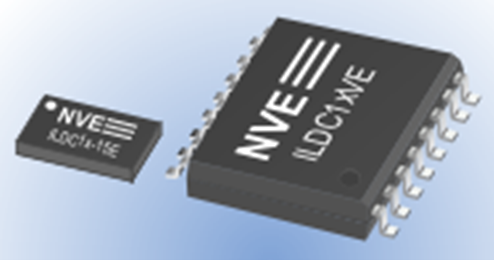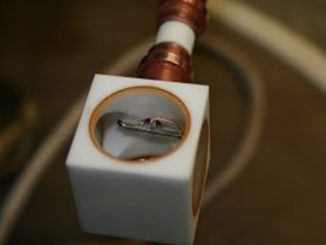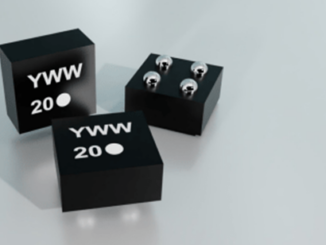
Billed as the world’s most sensitive magnetometer integrated circuit, the new ALT021-10E analog magnetometer from NVE Corporation has a remarkable sensitivity of 0.5 millivolts per volt per microtesla. Based on the company’s tunneling magnetoresistance (TMR) technology, the device can precisely measure fields from less than a microtesla to 250 microtesla.
NVE has also expanded its line of isolated DC-to-DC converters, another ultra-miniature series developed by the spintronics company. They don’t require ferrite beads for shielding.
The ALT021 is an ultrahigh sensitivity TMR analog bridge magnetic sensor. The differential bridge output is bipolar, meaning it is positive for a positive field and negative for an opposite field polarity. Featuring a Wheatstone bridge magnetometer configuration, the IC supports a variety of low-field sensing applications including motion, speed, and position control as well as non-contact current sensing, mechatronics and robotics, and navigation. There are now three versions in the series. The ALT025-10E has a linear range of 0 to 10 millitesla, the ALT023-10E has a linear range of 0 to 1 millitesla, while the new ALT021-10E has a linear range of 0 to 250 microtesla.

The line of DC-to-DC converters has been expanded with 3.3-to-5 volt and 3.3-to-6 volt boost versions, in addition to the original 3.3-to-3.3 volt parts. The 3 x 5.5 mm DFN6 is the world’s smallest isolated DC-to-DC convertor, says the company. They require a minimal parts count with three simple bypass capacitors as the only external parts required. No additional regulation is needed and there is no minimum load. Frequency hopping and shielding quash EMI, making ferrite beads unnecessary.
Based in Eden Prairie, Minnesota, NVE is a leader in the practical commercialization of spintronics, a nanotechnology that relies on electron spin rather than electron charge to acquire, store and transmit information. It manufactures high-performance spintronic products including sensors and couplers that are used to acquire and transmit data. See www.nve.com.



